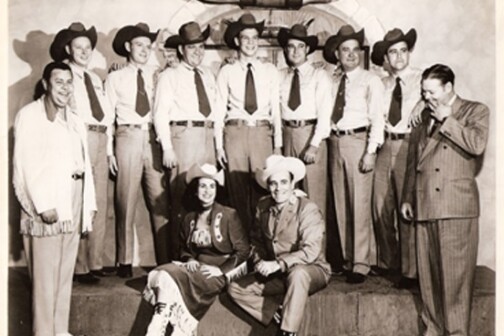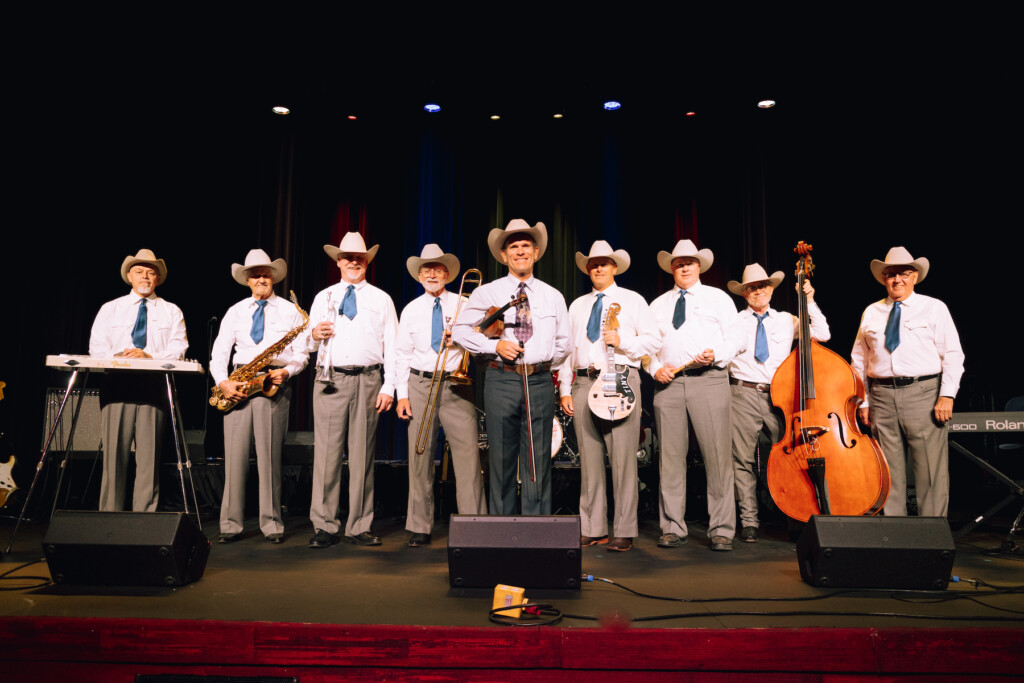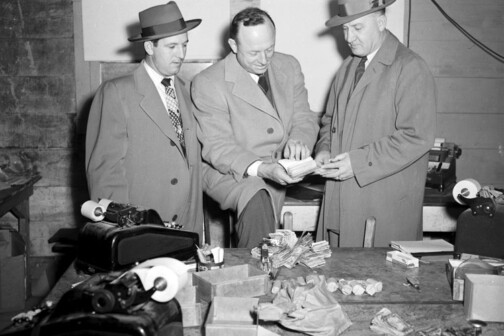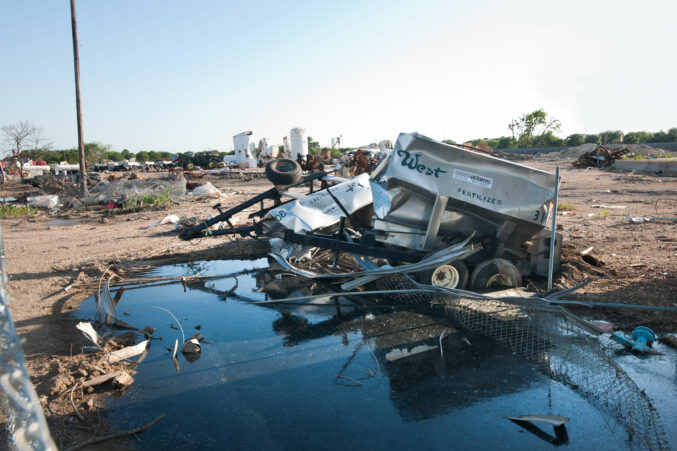The Longhorn Ballroom began its life as Bob Wills’ Ranch House, where the eponymous king of Western swing would sometimes ride his horse, Punkin, out on the dance floor before his Texas Playboys began performing. The Longhorn, which celebrated its long-awaited resurrection last year, has not hosted an act with that famous handle in decades. That changes on Saturday night.
Bob Wills’ Texas Playboys, under the direction of fiddler Jason Roberts, will make its first appearance at the cavernous venue on Feb 3. The show is in partnership with the Austin-based nonprofit Texas Dance Hall Preservation.
These are near mythic boot prints for the new Playboys to stand in, and its twin fiddles, pedal steel, and other instruments may summon the musical ghosts as the Playboys perform 99 percent of Bob Wills’ Western swing. “I want to play his music where Bob would give us a little ahhh-haaa holler if he walked in the door,” says Roberts.
When Wills opened the enormous place he had two bands: the Texas Playboys, who barnstormed in a bus throughout Texas and Oklahoma, and the Ranch House Boys with band leader Johnny Gimble, who headlined weekdays until the Playboys got home. They played together on the weekends.
After opening for Wills at the Trocadero Ballroom in Corpus Christi in 1949, Gimble left the Roberts Brothers Rhythmairs—which featured Jason Roberts’ grandfather and great uncles—to become a Texas Playboy, a dream come true. “To join Bob Wills and the Texas Playboys was like throwing a baseball around in your front yard and somebody coming over to sign you to the New York Yankees,” Gimble said in All Over the Map: True Heroes of Texas Music.

The Ranch House, a landmark at Corinth and Industrial in the shadow of downtown Dallas, fit smooth as a goat-skin boot with Wills’ movie cowboy image (he played in 36 B-westerns in the late 1940s) and the 45-foot bar was embedded with 656 silver dollars. The support beams were fashioned as cacti, and 18 wagon wheels festooned with lanterns hung for lighting from the ceiling. Wills kept horses in the building; his favorite, Punkin, had a stall there.
Texas kitsch aside, the Playboys’ sound was the draw, a signature brand of music that Wills pioneered. Western swing blended country, jazz, and blues with what Wills called the “Spanish tinge,” making for an irresistible dance beat.
“When you saw the Texas Playboys, you saw excitement,” says Texas Playboy Bobby Koeffer, now in his 90s, who played pedal steel on opening night. It was such a big deal that the show was televised on WFAA-TV. “They created happiness, not sad stuff, and they played without intermission.”
In Country Music magazine, Willie Nelson recalls Wills’ nearly surreal bandleading performance on stage. “There’s no way to describe what a Bob Wills show was like unless you were there. That man had the magnetism, or whatever a man has which has every eye in the house glued on him all night long.
“It didn’t matter if he was having a good night or a bad night, the people were such Bob Wills addicts and fans that every night was a good night. It was just indescribable.”
The vast and opulent Bob Wills’ Ranch House survived only for a blink, 1950-1952, as Wills lost the business to unrecoverable debt after his club manager committed fraud and failed to pay federal, state and entertainment taxes, according to Wills’ biographer, Charles Townsend.
Still, Bob Wills never really left the building. Bandleader Dewey Groom had arrived (after Jack Ruby’s unsuccessful lease) with his Longhorn name and 11-piece Western swing Longhorn band. For decades, at least half of Groom’s house band were former Texas Playboys, and the little dressing room behind the stage was “Bob’s room,” a place where he would unwind. It took on a hallowed status for visiting guest stars until the end.
Wills died in 1975, but his music lived on with the surviving Texas Playboys. Ray Benson and Asleep at the Wheel took up the Wills torch and has notched another half a century of Western swing. Benson describes the music this way: “It’s jazz with a fiddle, Count Basie with a cowboy hat. It’s got big band, it’s got New Orleans jazz, also country and cowboy, so it spans all kinds of music. But the instrumentation is what makes it a Western swing band.”
Asleep at the Wheel headlined the reborn Longhorn’s first concert last fall. Few musicians who played with Bob Wills are still around, excepting Koeffer and Louise Rowe, the glamorous stand-up bassist Wills hired as the Playboys’ only female musician. She was a constant presence, performing with a few of the living Playboys at Bob Wills Days in Turkey, Texas, until she was almost 90. She can no longer perform because of her health.
Jason Roberts emerged as the director of the rebuilt Texas Playboys after Leon Rausch, the Wills band’s last vocalist and bass player, suggested him to the Wills estate. It gave the idea its blessing in 2019.
It looks like a fine pairing. Roberts was the featured fiddler for 12 years with Asleep at the Wheel while the band was busy collecting two Grammys. He also played the Bob Wills role in the original touring musical On the Road with Bob, which appeared at the Kennedy Center for the Performing Arts and San Francisco’s Performing Arts Center.
In a reminder of the relationship webs linking the Western swing community, Roberts learned to fiddle using a color-coded and numbered finger placement system that Louise Rowe and her husband, fiddler Buddy Beasley, designed and sold in the 1980s.
“They called it the Buddy System,” Roberts says, “and I learned it.”
Bob Wills’ Texas Playboys featuring three horns, two fiddles, one pedal steel, one piano, a bass, and drums will headline the Feb. 3 show, which will be opened by the Longhorn Players, a house band chosen for their chops in the trade.
The historic moment of the Texas Playboys’ return to their home is not lost on Roberts.
“We try to play Bob Wills’ music with the authenticity and respect that it deserves,” he says. “It kind of gives me chill bumps to be coming back to Bob Wills’ Ranch House.”
Bill Sanderson is a Dallas-based writer who is collecting a Bob Wills Ranch House/Longhorn Ballroom oral history for a book. You can read his previous history of the Longhorn right here.
Author







